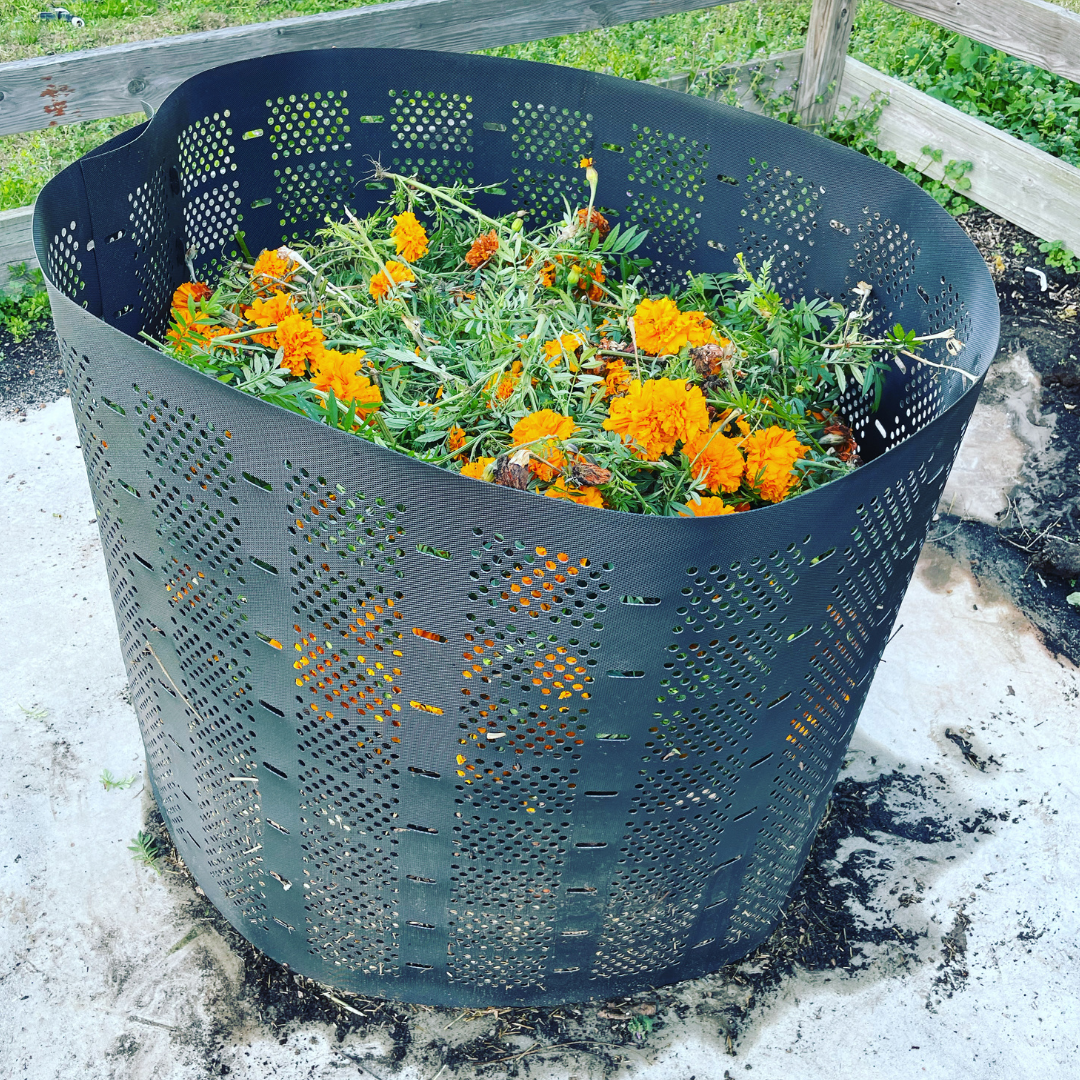"WHY DON'T YOU MAKE YOUR OWN COMPOST?"
We've been asked that question quite a bit over the years. Our best explanation was that we had an affordable source of good compost nearby, so we had no need to make our own. Also, because we have 10 garden plots that are approximately 1,000 sq. ft. each, it would be impossible for us to make enough compost for all those plots.
We get a truckload of high-quality gin trash compost from Black Gold Cotton Compost in Lenox, GA at least once a year. We've been using the gin trash compost for 3-4 years and couldn't be happier with it. Having that source nearby has allowed us to start experimenting with no-till gardening in the past couple years and we really like what we're seeing from those experiments thus far.
Another reason we never really tried composting was because I didn't really have a good way to turn and manage a big pile of compost. We don't have a tractor, so we'd have to turn it by hand. We have a concrete pad that's perfect for dumping garden waste, but the waste doesn't stay contained in a concentrated pile very well. As a result, it doesn't "cook" or compost very well because it won't stay piled.
But recently, I've become more and more intrigued with making our own compost. I know we don't have enough waste to make enough compost to supply all our plots. But I thought it would be something fun to try and a great learning experience for the kids. So we took the plunge!

THE BEGINNING OF OUR COMPOSTING JOURNEY
I did quite a bit of research online before deciding on the setup we have currently. I looked at many different styles of tumblers and bins, but most of those were too small for the amount of garden and kitchen waste we have. After exhaustively searching for options, I found exactly what I was needing. Commonly called "Geobins," these durable (and adjustable) plastic rings make it easy to create columns of compost in your yard or on a concrete pad like we have.
I purchased the first one from Amazon, assembled it in a few minutes, and the kids and I started looking for stuff to add to it. We raked some leaves from our pecan trees, found some straw and other garden debris that had collected under the barn, added some plant debris after pruning our marigolds, and added a bunch of cardboard from Christmas gifts.
Who knew composting could be so fun?! I don't know why I waited so long to try this. Even though we might only make enough compost for one of our plots, we're significantly reducing what we're putting in the garbage can, teaching the kids about recycling, and just trying to be better stewards of the environment. I used to get annoyed at having a bunch of cardboard in the trash can, but now I get all excited about having cardboard for the compost bin!

The Johnson Su Bioreactor Modification
Our first Geobin composter was full within a few weeks. After adding fresh material, it would compact a little over time. But we soon realized we needed more Geobins. And we still had plenty of room on the concrete pad to add at least 4-5 more bins.
When we published our first video on the new composting system, we had many viewers mention that we should add a pipe in the center to improve the airflow along the composting column. This modification is called a "Johnson Su Bioreactor" and the idea was made popular by a professor at New Mexico State University.
The idea here is that the improved airflow will allow the entire bin to compost evenly with no turning or minimal turning. It also helps the bin to create a fungal-dominated compost as opposed to a bacteria-dominated compost. This fungal-dominated compost can then be used to make extracts and teas in addition to using the compost in a traditional way of amending garden soil.
I found many different variations of the Johnson Su Bioreactor online. Some of them were really simple, while others were quite complicated. Some folks used a single pipe in the center of their bin, while others used several smaller pipes. We decided to keep it simple for the first try. So I purchased a long piece of 3" PVC pipe, cut it into 3' sections, and drilled a bunch of holes in it.
The tricky part of this system is that you have to find a way to keep the pipe upright in the center of the pile. Once you get enough material packed into the bottom, the pipe will easily stay in place. But it's tricky to get it stable initially.
We decided to use some wheat straw and a few buckets of garden soil at the bottom to help stabilize the pipe. We then added some pea crop debris, cauliflower plants that had been harvested, and some cardboard boxes. All these additions helped to secure the pipe in the center, especially once everything settled.
In addition to garden and kitchen waste, we've been adding spent grains from a local brewery. We also plan to try and obtain more coffee grains from local coffee shops, and basically anything we can find to add to our bins. Additionally, we recently purchased a paper shredder so we can recycle sales papers and junk mail. We've also been shredding the cardboard so that it will decompose faster.
COMPOSTING GOING FORWARD
We've only been doing this composting thing less than a month, but now I understand why so many people enjoy it. The process is just as fun as I'm sure seeing the end product will be. It's so satisfying to place your waste into something that will benefit your garden as opposed to placing it in the garbage can. We can't wait to add more bins until we have the entire concrete pad filled with beautiful black gold for our gardens!

